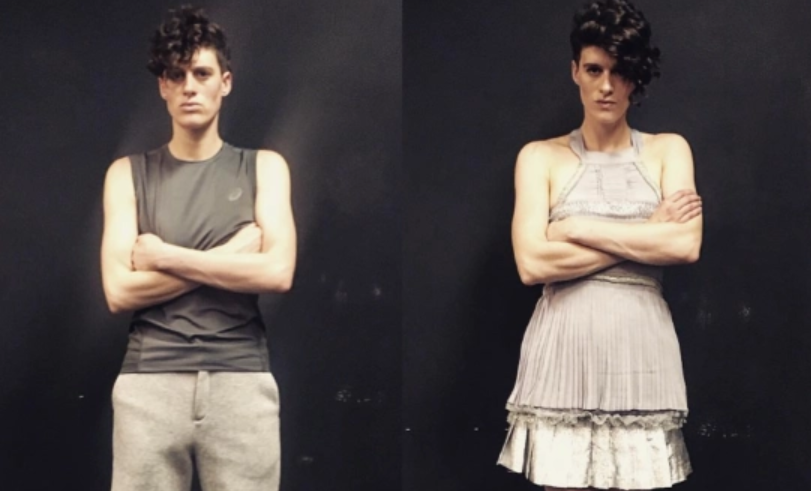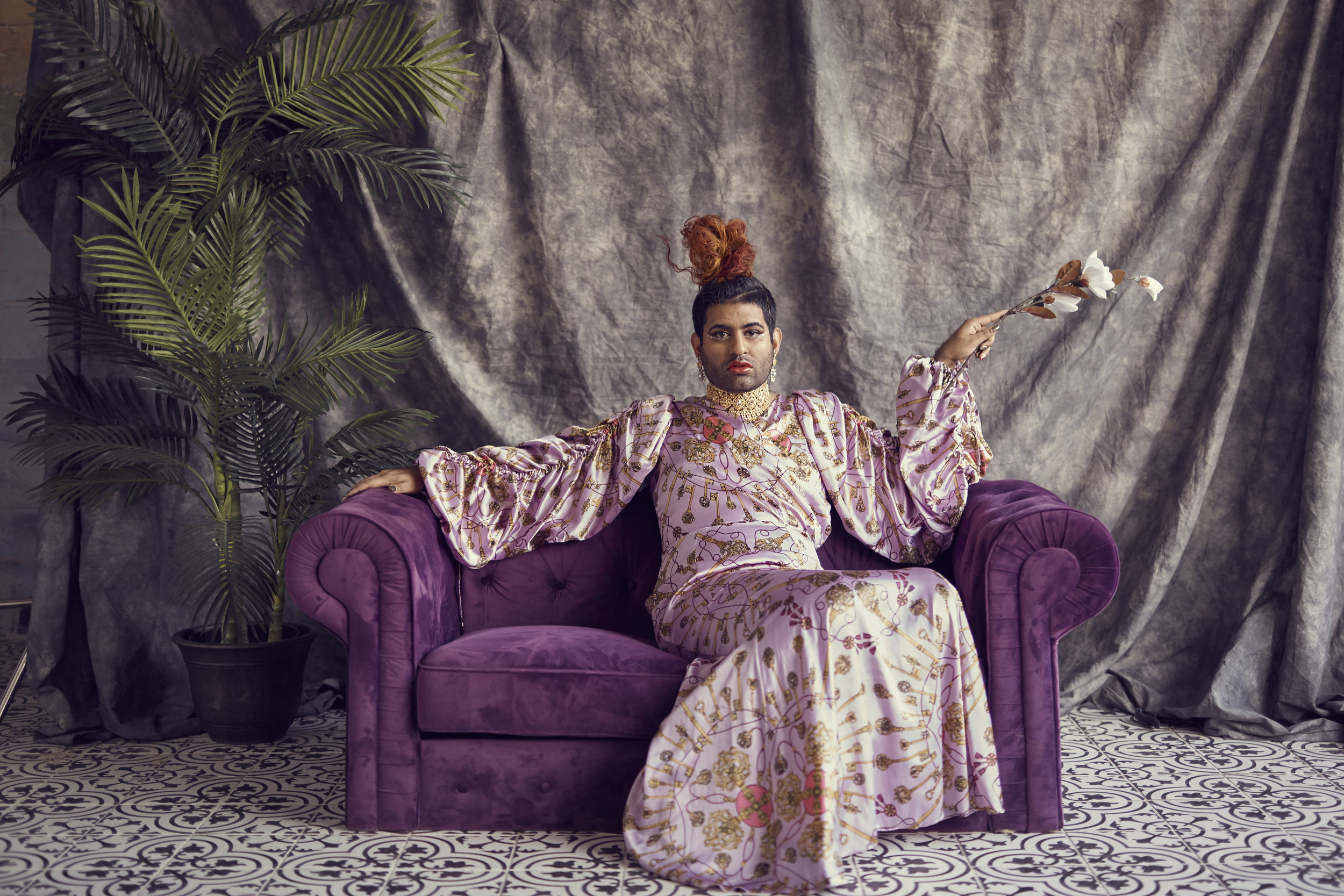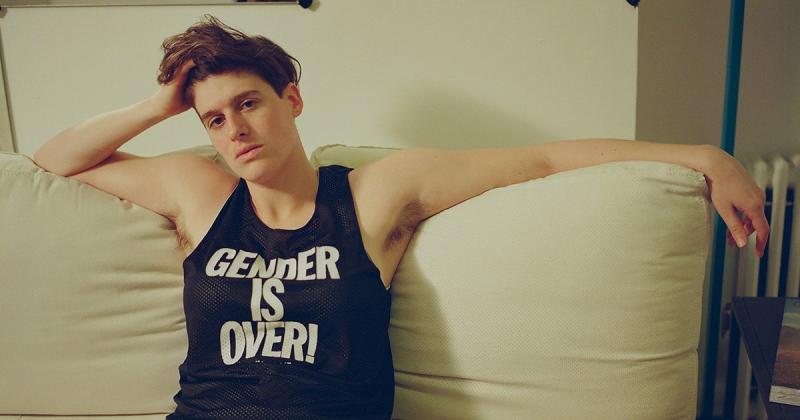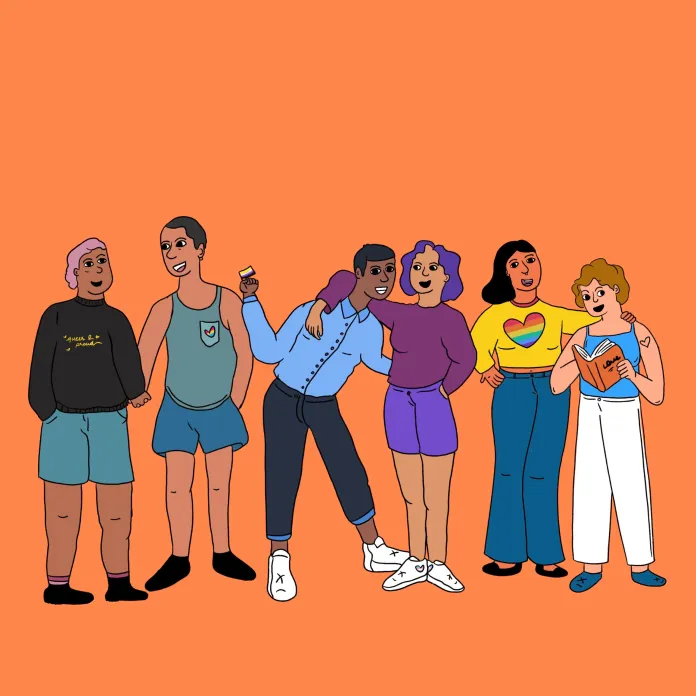Editor’s Note: FII’s #MoodOfTheMonth for June 2022 is Pride Solidarity. We invite submissions on the many layers of this theme throughout the month. If you’d like to contribute, kindly refer to our submission guidelines and email your articles to sukanya@feminisminindia.com
In 1981, the gender schema theory was introduced by psychologist Sandra Bem, wherein she talked about how the gender norms introduced by society influence the behaviour of individuals from a young age. She believed that this gender stereotyping has a negative impact and that the dichotomy between traits that are considered masculine or feminine is unnecessary.
Bem argued that it is better to raise children in an androgynous manner, rather than forcing traditional gender roles on them. This raises the question of what androgyny is. According to Bem, individuals who possess or learn both masculine and feminine traits can be called androgynous.
Ellen Piel Cook, in the book Psychological androgyny (1985), defines androgyny as a combination of both masculine and feminine traits and supports this argument. Bem used another category for people who have a few supposed masculine as well as a few feminine traits and classified them as undifferentiated. Presently, however, the Merriam-Webster dictionary gives two contrasting definitions of androgyny: “The quality or state of being neither specifically feminine nor masculine, or, the combination of feminine and masculine characteristics.”
This creates confusion as to what androgyny actually is and how people androgynously express themselves. Another definition given by a website specifically devoted to androgyny is: “Androgyny, first and foremost, is a state of mind, not just an attitude or fashion statement. The notion that only androgynous-looking people can be or are androgynous is a misconception. Androgynes can be said to have the gender identity of both a man and a woman — or neither. Some identify with both traditional genders, while others see their identity as more of a synthesis and consider themselves to be agendered, as in none of the above. Some androgynes go as far as to call themselves gender outlaws.
The word androgynous can apply to both superficial and psychological characteristics, whereas the word androgyne pertains almost specifically to gender identity, not to looks. Just as all squares are rectangles but not all rectangles are squares, all androgynes are (psychologically) androgynous but not all androgynous(-looking) people are androgynes.”

Recently, Indian actor, writer and director Konkona Sen Sharma expressed how she has always felt a bit androgynous. When one searches for the definition of androgyny, one of the first few images that show up as an example is that of the American gender non-conforming model Rain Dove. Dove describes themselves as a model, actor, and activist breaking binary laws. They are best known for their work in subversive fashion, posing alternately as male and female in photoshoots, productions, and runway shows.
Dove was born in New York and grew up in Vermont. As a child, they were bullied, and struggled to define their gender identity. In their late teens, they moved to Colorado. For a while, Dove worked with a fire prevention team where they maintained a male identity, but left the job because of the dangers it entailed.
In an interview, Dove revealed that when they were struggling financially, they lost a bet to a friend who insisted that Dove should join the modelling world. Dove decided to go for a casting call for Calvin Klein’s charity show in San Francisco but was told to come back the next day when they were casting male models. After that, Dove started getting offers for modelling work. They decided to take up the career to raise money for issues they felt strongly about like the welfare of homeless people. They started modelling for both men’s and women’s wear.
After their story was picked up by the mainstream news, Dove was voted as SheWired’s Most Eligible Bachelorette in 2014 and named one of Elle Magazine’s 12 Women Who Are Redefining Beauty in 2015. On being recognised as the androgynous model who revolutionised the modelling industry, they decided to embrace a gender-non-conforming identity. Dove started calling themselves a gender capitalist and began advocating for the LGBTQIA+ community.
There can be no boxed definition of something as fluid as androgyny. Androgyny is expressed in different ways by different people and their experiences also differ. Therefore, it cannot be limited to what the society thinks is valid enough to be accepted. It invalidates the identity of people who understand androgyny in ways that are not represented enough. The definition of androgyny should be inclusive of people who reject gender and gender role,s as well as people who embrace both their masculinity and femininity

Alok Vaid-Menon is an American gender non-conforming and transfeminine performance artist, poet, and LGBTQIA+ rights activist, whose eclectic style and poetic challenge to the gender binary have been internationally renowned. They have been featured on HBO, MTV, The Guardian, BBC, CNN, and the New York Times, and have presented their work at 500 venues in more than 40 countries.
Vaid hails from an Indian-American family with Hindu roots and grew up in College Station, Texas. They revealed in an interview that growing up in a conservative environment, they had no access to comprehensive gender and sexuality education. Being visibly gender non-conforming, they were harassed from a young age and did not have the luxury of coming out.
However, when Vaid decided to embrace their identity, they were met with acceptance from family and friends. They found poetry to be a space where they could be honest about their experiences with gender, patriarchy, family dynamics, mental health, etc.
Vaid talks about their experiences through their book of poetry, Femme in Public, and their Instagram account. They became the youngest recipient of the Live Works Performance Act award for their poetry. Vaid said in an interview that they could not find clothes for people like them, so they created their own gender-neutral clothing line. They have designed three fashion collections out of which the third one was released in India, which asserted that skirts and dresses are gender-neutral.
Also read: Could Androgyny In Fashion Help Build A Genderfluid Society?

Androgyny: Gender stereotypes and gender assertion
Rain Dove thinks that labels are not important as long as you can be your true self when it comes to gender identity. Years into their modelling career, they had not found it necessary to use a label to describe their gender to people. They dressed in a manner that was neither typically masculine nor feminine and modelled for both men’s and women’s clothing collections. After being celebrated as an androgynous model, Dove was labelled as non-binary, gender fluid, and gender non-conforming by those who interviewed them. In an interview, Dove said: “Now my identity is the simplest it’s going to be. I feel pretty solid in just saying I am I.”
On the other hand, Alok Vaid expresses themselves in a way that is a mixture of both traditional masculinity and femininity. They challenge the concept of gender through their poetry and believe that it is important to have representation for gender non-conforming youth in media and other spheres for them to know that they are not alone.
In this context, it is also important to note that even though both the people mentioned in this article are gender non-conforming, the difference in their cultural backgrounds makes their experiences with androgyny different. Even when androgyny is represented, it is always shown aesthetically. Those who accept androgyny only do so when it is pleasing to their eyes. Therefore, it becomes harder for people of colour, individuals who don’t have representation, and individuals who grow up in a conservative environment to accept themselves and be accepted by the society for who they are, when they do not conform to gender roles
They also actively talk about how it is harder for gender non-conforming people of colour to be accepted by the society at large, especially when they grow up in a patriarchal environment where gender roles are ingrained in them. Vaid has often talked about being ridiculed by people for the way they dress. In response, they said: “I don’t get dressed to look like anything, other than looking like myself so at the end of the day I just say, I’m Alok and I’m figuring it out.”
Androgyny, as an expression of one’s identity, is still not accepted widely in society as it does not fit in with the gender binary that has existed for ages. As a consequence, both Dove and Vaid are ridiculed and face harassment in the form of words and actions almost every day, simply for being who they are. They have shared their respective experiences as openly gender non-conforming or androgynous people, in many interviews and blogs.
Rain Dove has a blog account on Instagram, where they raise awareness about gender neutrality by posting images of themselves dressed in masculine and feminine versions of the same outfit and analyse how the reactions of people would change. In their experiments, they are sometimes judged more for their actions when dressed as feminine.
Often, they get hate from people who ask Dove to decide whether they are a man or woman. The belief in the traditional system of the gender binary is so strong that how people dress or the pronouns they use bother other people if it does not fall in line with the system. It often also affects Dove’s life in doing something as simple as deciding which washroom to use in public spaces without being harassed, which is a common issue faced by gender non-conforming and transgender people. However, Dove has found acceptance in the fashion industry for representing androgynous and gender non-conforming people in modelling.

Similarly, Alok Vaid also has a blog as well as social media accounts where they share their experiences. They have also talked about it in interviews, and through their spoken word poetry performances. Going out in public, dressed in a manner that challenges both traditional masculinity and femininity, often puts them at the risk of being harassed and they are given no privacy.
Vaid has mentioned instances where even people from the LGBTQIA+ community have constantly disregarded their identity for not conforming to the gender binary. They have also received a lot of hatred for not being androgynous in a way that is neither masculine nor feminine because that is how androgyny is typically represented and seen by society.
There can be no boxed definition of something as fluid as androgyny. Androgyny is expressed in different ways by different people and their experiences also differ. Therefore, it cannot be limited to what society thinks is valid enough to be accepted. It invalidates the identity of people who understand androgyny in ways that are not represented enough. The definition of androgyny should be inclusive of people who reject gender and gender role,s as well as people who embrace both their masculinity and femininity.
In this context, it is also important to note that even though both the people mentioned in this article are gender non-conforming, the difference in their cultural background make their experiences with androgyny different. Even when androgyny is represented, it is always shown in a way that is aesthetic. Those who accept androgyny only do so when it is pleasing to their eyes.
Therefore, it becomes harder for people of colour, individuals who don’t have representation and individuals who grow up in a conservative environment to accept themselves and be accepted by the society for who they are, when they do not conform to gender roles.

The simplest way to define androgyny is perhaps to say that it is the breaking of the gender binary, as well as rejecting the idea that the biological sex of a person determines how they should express themselves. It is easier to understand this if gender is seen as a spectrum rather than a binary.
Androgyny can be the mixture of masculine and feminine attributes, but it can also be the rejection of both masculinity and femininity, and adopting a gender neutral outlook. It should be inclusive of all people who express themselves androgynously or identify as such. All the diverse perspectives should be included when trying to define androgyny, rather than looking for a simple, aesthetic and socially acceptable definition that often excludes people.
It is also necessary to not stick to archaic definitions of androgyny, and instead, consider the perspective of androgynous people in the present day. Assertion of androgyny is also a process of erasure of the dichotomy between traits that are considered masculine and feminine by people who may or may not identify as androgynous. Androgyny is a multi-dimensional and fluid concept that must be viewed from many different lenses.
Also read: What Are Gender Pronouns And Why Should We Use Them Accurately?
Manjishtha is a final year History student from IP college waiting for their degree to become a historiographer. They identify as non-binary and queer (she/they). Some of their hobbies are writing, reading, listening to music and posting on Instagram. Manjishtha has two Instagram accounts for graphics and writing, respectively
Featured Illustration: Shreya Tingal for Feminism In India





Excellent perspective on androgyny. It is our firm belief that the idea of gender is spread across a spectrum, and restricting it in binary terms is disrespectful to the people who actually face the problems. Kudos!